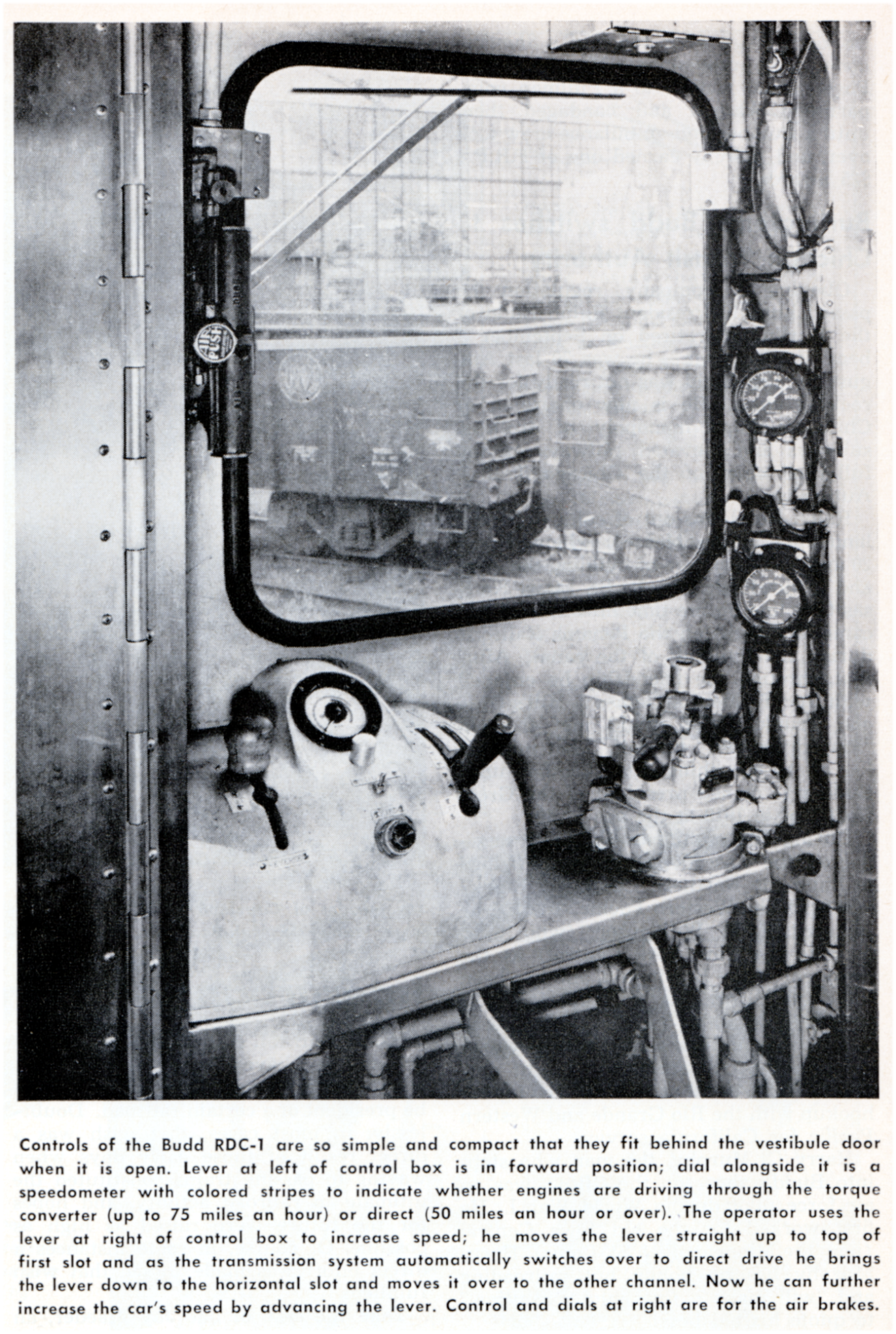Here are old diesel ads from circa 1950 and commentary on the Diesel Emergency Board report. The latter comes from a November 1949 edition of the Brotherhood of Locomotive Firemen and Enginemen's Magazine.
The technological changes which accompanied the introduction diesel-electric locomotives in the US and Canada enabled railway companies to slash their operating staff, shop staff and semi-skilled labour.
Diesels pulled more freight, farther, in longer trains, with less maintenance than steam locomotives. A system of coaling and watering facilities could be replaced with fewer simpler facilities to pump diesel oil.
With the ability to connect the pneumatic and electrical systems of the locomotives, a string of diesel units could be operated by a single engineer. So fewer engineer-hours were needed to move a railway's traffic over the course of a year.
Steam Locomotive Fireman
A fireman was essentially an 'engineer in training' whose job it was to keep steam up through the skillful management of (usually) coal and water before and during a trip. The fireman replenished the locomotive tender with these items as needed, and performed mundane tasks associated with engine operation. As visibility was extremely restricted along the 'barrel' of the locomotive, and often obstructed by swirling smoke and steam, the fireman often assisted the engineer by 'having an eye' for signals and other significant trackside features.
An experienced fireman would have steam built up before the engineer opened the throttle wider to ascend a grade. In cities and during station stops, the fireman would avoid producing unacceptable amounts of smoke.
Steam would be built up to allow a passenger train to smartly 'get out of town'. However, the fireman would avoid having excess steam lift the main safety valve while at the station. The resulting thunderous roar would annoy the traveling public. Correspondence courses likened lifting the main safety valve to throwing a scoop of coal onto the roadbed - the energy from the coal was being wasted.
A memory for which seemingly identical engines within a given class steamed better or worse was often within the fireman's repertoire. Rolly Martin could generally say whether he had worked on a given engine or not.
Additional firing skills included knowing how to prevent cheap, bad coal from clinkering the movable grates in the firebox.
And, of course, the most fundamental job of the fireman was to always watch the boiler water level sight glass to ensure that the firebox crown sheet was covered to prevent a boiler explosion. As was the case for other duties of the fireman, the knowledge of the railway line profile was essential: On downgrades, the water would flow forward within the boiler and in extreme cases this could subject the crown sheet to becoming uncovered ... with the risk that it would be melted by the fire ... causing that pesky aforementioned boiler explosion business.
versus ... Diesel Locomotive Fireman (aka 'Helper')
Early diesel road switchers provided better smoke-free forward visibility for engineers and full carbody 'cab unit' diesels offered superb forward visibility. The engineer didn't need a fireman's eyes, because brakemen could be trained and assigned the task of looking out. Diesel fuel was topped up by shop staff and fuel pumps responded almost instantly to the engineer's opening of the throttle.
'Keeping steam up' for passenger train heat was a link to the fireman's traditional work, but many steam generator functions could often be controlled from the diesel cab. And railway management was busily seeking relief from regulatory requirements to operate many passenger trains as it was.
So that left locomotive troubleshooting while a train was on the move as the single function which a fireman-helper could perform ... if they were trained for it. However, if the train was stopped, the engineer could deal with any diesel issues.
... but did management actually want the engineer stalling the train on the ruling grade and then fiddling around in the engine room? Did management mind if the main line was blocked as the crew 'doubled' their train up a hill as the traffic got backed up in front and behind?
In the defence of the fireman-helper - railway management probably had an overly optimistic view that diesel locomotives could operate as reliably as the family automobile - particularly when units from different manufacturers were mated in a long MU'd locomotive consist.
Exploiting their new 'productivity tools', railways were running more trains faster to meet the postwar boom in traffic. Would all this fast-paced 'action' compromise safety ... and wouldn't operations be safer if an already trained steam-experienced fireman kept the engineer company in the cab?
... Some of these 1950-era routes still operated under more traditional traffic control processes. Extra train engineers, as they 'helped themselves' over the subdivision, had to calculate their probable speed ahead, the distance to the next appropriate siding and their clearing time. As they kept an eye out, and 'drove' with good train-handling technique ... they also had to do mental calculations involving the intricacies of the rules; timetable; scheduled trains - on time or late; slow orders; and the movements of other extra trains.
While a short 44 tonner wayfreight or a Budd car consist (both are mentioned), might make it possible for a conductor to watch over the engineer's shoulder and consult as necessary ...
One could make the case for a fireman-helper to remain available somewhere in the locomotive consist in complex, or high-speed, or non-ABS territories - particularly on passenger trains.
... But a diesel-powered 3x weekly mixed train on a rural subdivision could not justify the soothing presence of a vestigial fireman on board.
 |
| from: Trains; November 1949; Kalmbach Publishing. |
















